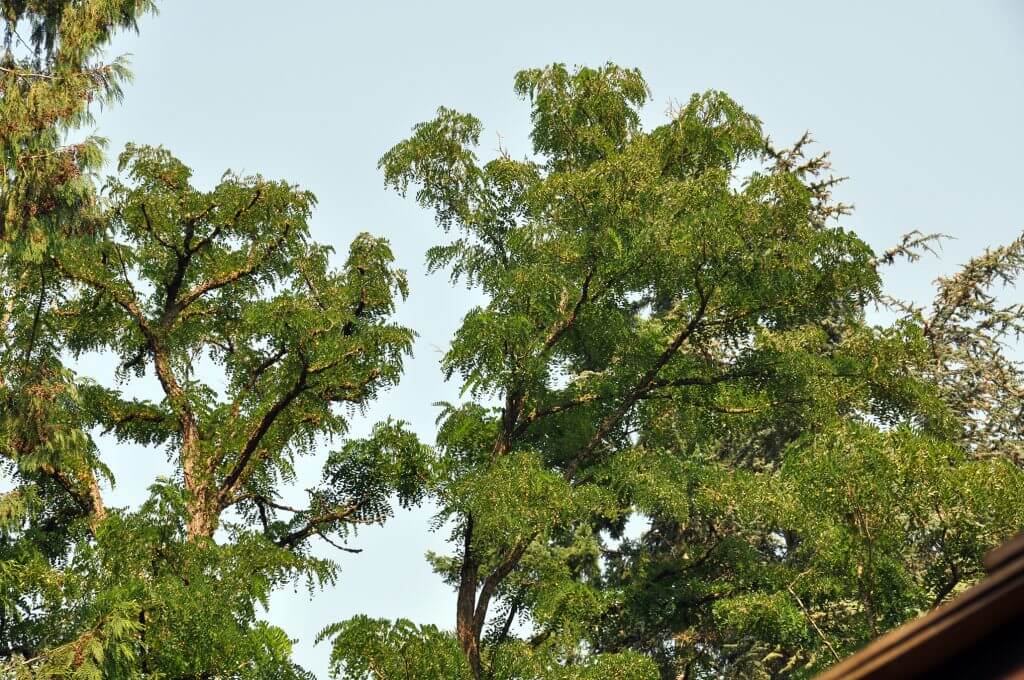Are you wondering how to eliminate locust tree sprouts in your yard? Locust trees are those tall, skinny trees that often have thorns on their branches.
Locust trees are known for their fast growth, which means they can sprout up in unwanted places, like your garden or lawn. Dealing with locust tree sprouts can be a bit of a hassle, but don’t worry; it’s not too hard to tackle.
We’ll walk you through some simple steps to help you get rid of those sprouts and keep your outdoor space looking neat and tidy.
1. The Biology of Locust Trees
Understanding the biology of locust trees begins with a visual guide to locust trees. These resilient trees can regenerate from their roots and stumps, posing a significant challenge to control. The ability of locust tree sprouts to rapidly dominate an area can displace other vegetation, creating environmental imbalances.
One way is to remove the sprouts by cutting or digging them out manually. However, this can be a lot of work and may need to be done more than once. Another option is using herbicides, chemicals made to kill unwanted plants. But we must be careful not to harm the plants we want to keep nearby.
2. Identifying Locust Tree Sprouts
Locust trees, which are a type of Robinia tree, are famous for being tough and able to grow in different places. They grow really fast, and this can sometimes be a problem for people who own land or work on landscapes because they can take over and crowd out other plants.
To deal with locust tree sprouts, it’s important to be proactive. That means regularly looking around the big trees to spot the new sprouts before they become a big issue. You can also use tools and safety gear to pull them out by hand. Another way is to put weed-killing stuff on the parts you cut off to stop them from growing back.
3. Challenges Posed by Locust Tree Sprouts

Moreover, having locust tree sprouts around can cause more than just problems with your building and safety. These unwanted plants can harm the environment, too. They can take over from the local plants, which disrupts the area’s natural balance. They also release chemicals that stop other plants from growing, meaning there are fewer plant types and less food and shelter for animals.
When it comes to making your garden look nice or growing plants, locust tree sprouts can be a real pain. They grow fast and have many leaves blocking the sun and nutrients other plants need. This makes it hard to grow the plants you want and makes taking care of your garden tougher. In short, dealing with locust tree sprouts isn’t just about protecting your property; it’s also about keeping your local environment healthy and diverse.
4. Methods for Removing Locust Tree Sprouts
Another good way to deal with those pesky locust tree sprouts is by using machines. You can use things like lawnmowers or special cutters to chop them down. This works especially well if you have a lot of sprouts to deal with. But remember, you’ll need to keep doing it regularly to ensure the sprouts don’t return.
Besides these methods, there are things you can do to stop locust tree sprouts from showing up in the first place. If you look at your mature locust trees often and take care of them, you can find and remove sprouts early on. Trimming and shaping the tree’s top part can also prevent unwanted sprouts from growing.
5. Eco-Friendly Alternatives
Additionally, using integrated pest management (IPM) methods can help control locust outbreaks without using harmful chemicals. IPM combines different techniques like changing crops, planting certain crops to attract locusts, and using specific pesticides to reduce the impact on the environment while effectively managing locusts.
Technology is also helping with locust control. Drones with special cameras can find locust swarms early so that we can act quickly. Satellite pictures and weather predictions help us guess where locusts might go next so we can plan.
6. Preventing Future Locust Tree Sprouts
It’s important to know what makes locust trees grow new shoots. These trees tend to make more shoots when they’re not feeling well, so taking good care of them is crucial. Giving them enough water and the right nutrients and keeping away pests and diseases can make them feel better and reduce new shoots.
You can also use natural mulch around the bottom of your locust trees to stop weeds from growing. Weeds can take away the things the tree needs and make more shoots grow. Mulch also helps keep the ground wet and keeps the tree’s roots at the right temperature.
Conclusion
To get rid of locust tree sprouts, follow these simple steps. First, grab your gardening gloves and a pair of pruning shears. Then, head out to your garden and look for those sprouts. They usually pop up around the base of the locust tree or in nearby areas.
Once you spot them, use the pruning shears to snip them off as close to the ground as possible. Make sure you get the whole sprout, roots, and all. This will help prevent them from coming back if the sprouts keep coming back.
You can try digging around the area and removing any hidden roots.

